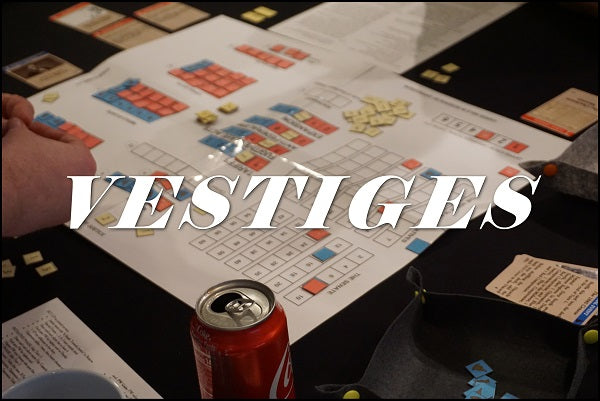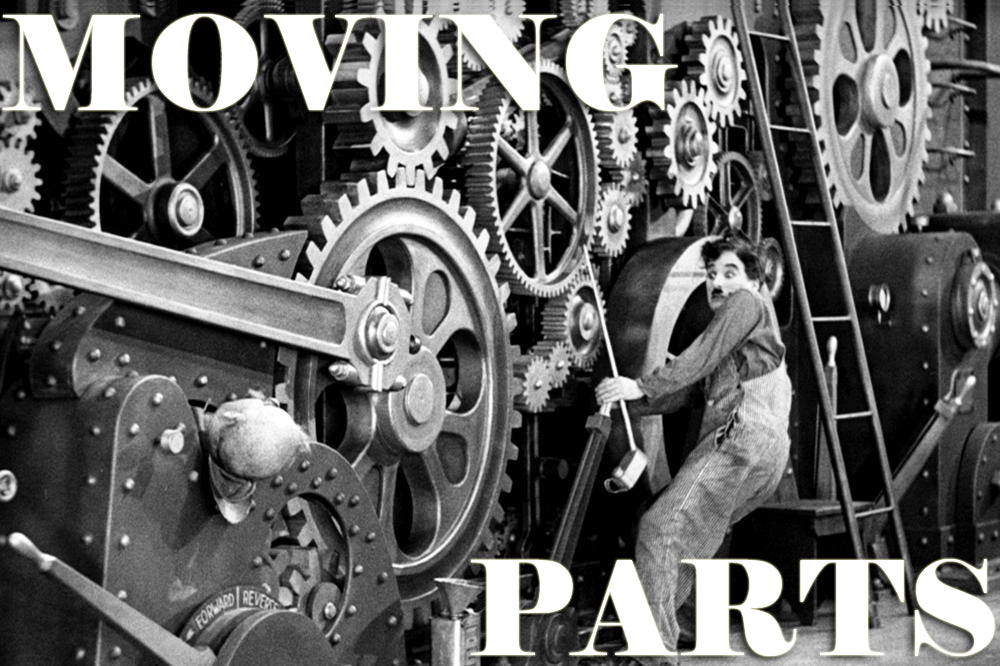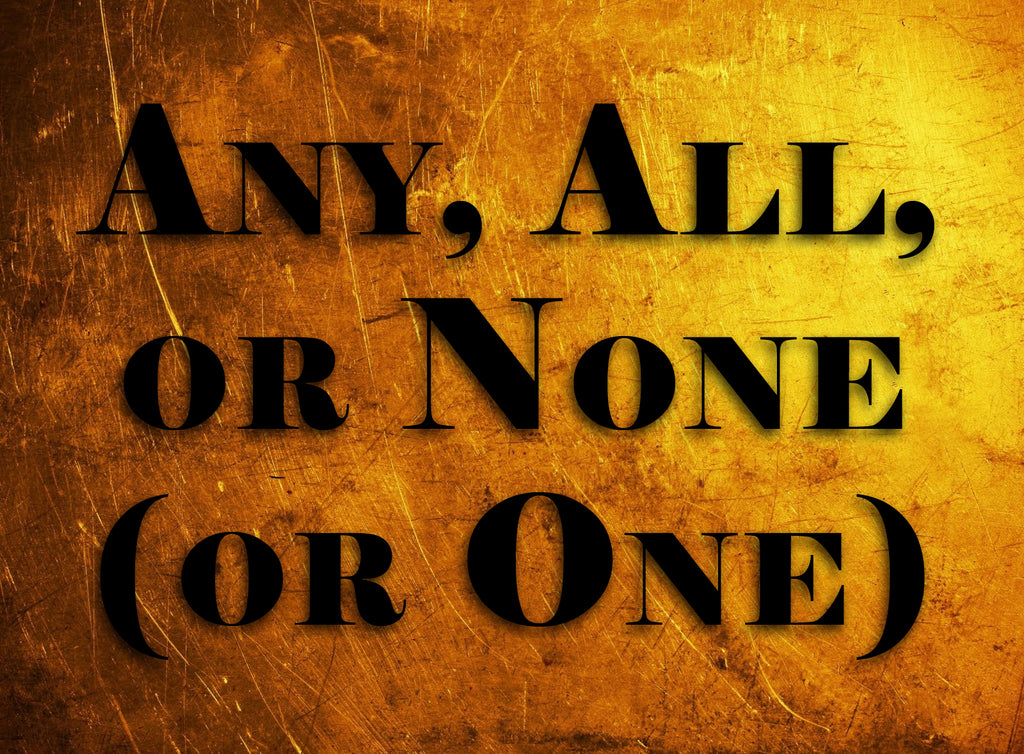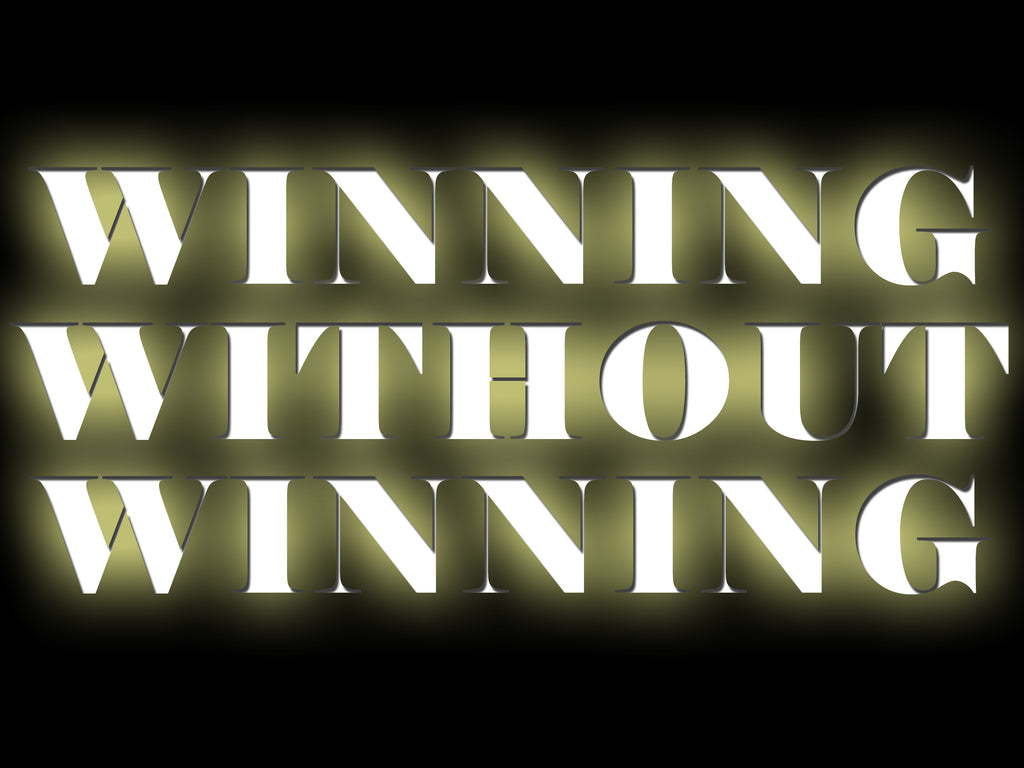Hollandazed: Thoughts, Ideas, and Miscellany
TRAINS AND CHIT: A CON REPORT IN EIGHT CHAPTERS Part 1 of 2 (by Tom Russell)

I. Innocents Abroad Mary and I have never really travelled much. For a long time, we simply didn't have enough money to go much of anywhere or do much of anything. I did get a better job eventually, which gave us some more breathing room, and introduced me to the hitherto alien concept of getting paid time off. We began to make modest plans for three- and four-day weekends, but it seemed like every time we were going to make good on those plans, the day of or the day before something would happen. A hike we had planned for...
VESTIGES (by Tom Russell)

One of the core ideas of This Guilty Land is that it's a two-player game with three factions, each representing an abstract idea. One player represents Justice, their opponent Oppression, and the third, non-player faction, Compromise. Justice has blue markers and Oppression red, while the flip-side of each is used by Compromise to indicate "Compromise that leans toward Justice" and "Compromise that leans toward Oppression". One of the primary ways that Justice gets victory points is to flip blue-aligned Compromise markers to their Justice side. Both players need to contend with the fact that "their" Compromise Senators can be persuaded...
MOVING PARTS (by Tom Russell)

We spent this past weekend in Dallas - more on that in a future blog-thing - and I got the chance to play two games that I had been very keen to play. One of these was God's Playground, Martin Wallace's 2009 three-hander about the history of Poland, and the other was Cole Wehrle's John Company, released last year by Sierra Madre Games. They had more in common than my desire to play them; both games are very procedural (lots of phases, lots of little steps) and both are fairly intricate, ornate objects with lots of moving parts. Both games...
ANY, ALL, OR NONE (OR ONE) (by Tom Russell)

I read once somewhere that one of the biggest challenges that Charles S. Roberts faced when he invented the commercial board wargame was explaining to players that they could move more than one piece on a turn. That they could, indeed, move every piece on a turn if they so chose. This idea is so central to the illusion of maneuver that powers the hex-and-counter idiom that we who speak its language sometimes fail to recognize how strange and extraordinary it really is. This gaming table constructed in Mainz, Germany (1735) and displayed in the Cleveland Museum of Art combines...
WINNING WITHOUT WINNING (by Tom Russell)

Victory Conditions are a fine art in historical games. For the side that won the conflict, you generally want conditions that mirror the historical result. For the side that was defeated, you'll either need to come up with a reasonable hypothetical of what victory would have looked like, or, in cases that are really lopsided, you'll need to resort to "lose the battle, but win in game terms" conditions - the side still loses, but loses in a less humiliating and decisive fashion, which is enough to give the disadvantaged player a fair shot at winning the game. What...
